Christmas Island, Naturally
-The Last Cat On Christmas Island
- A Visitor's Guide to the Birds of Christmas Island
The 3rd Christmas Island Conservation Plan
Exhibition, Sydney Biennale 2016
Final Report of the Christmas Island Expert Working Group, Installation at CCA, Singapore, 2018
All images by the ICZ
Mammalia
CHRISTMAS ISLAND, NATURALLY
With photographs from the archives of The Institute of Critical Zoologists
To a large extent the information obtained about the mammals is negative in nature. In 1887 the officers of the Flying Fish and J. J. Lister collected specimens of two rats, a large fruit-bat and a shrew (all indigenous to the island), and saw a small, insectivorous bat. C. W. Andrews took examples of all five species in 1896-97, but was unable to make any further additions to the list.
C. A. Gibson-Hill,' A Note on the Mammals of Christmas Island', The Raffles Bulletin of Zoology, Volume 18, 1947
 Christmas Island Flying Fox
Christmas Island Flying Fox
In late August 2009 a tiny, solitary bat fluttered about in the rainforest near Australia's infamous Christmas Island detention camp. We don't know precisely what happened to it. Perhaps it landed on a leaf at dawn after a night feeding on moths and mosquitoes, and was torn to pieces by fire ants; perhaps it succumbed to a mounting toxic burden placed on its tiny body by insecticide spraying. Or maybe it was simply worn out with age and ceaseless activity, and died quietly in its tree hollow. But there is one important thing we do know: it was the last Christmas Island Pipistrelle Pipistrellus murrayi. With its passing, an entire species winked out of existence.
F. Tim, ‘Unmourned death of a sole survivor’, Sydney Morning Herald, 2009
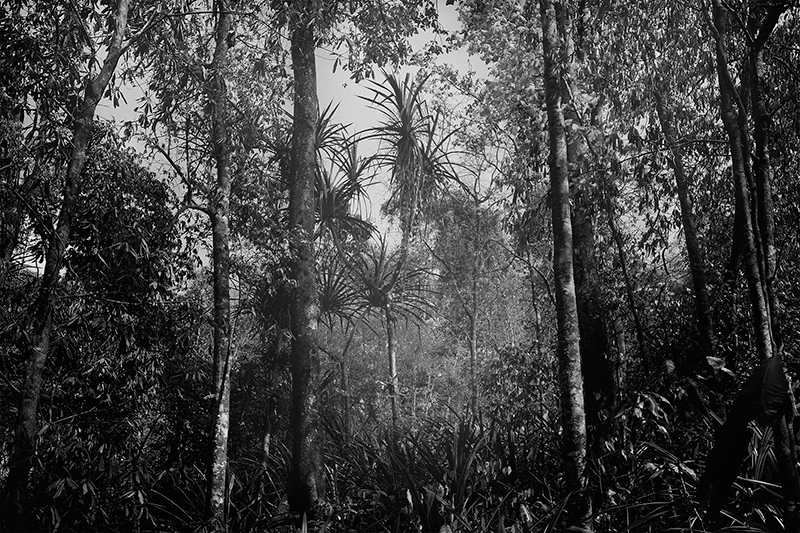 The last echolocation call of a tiny bat native to the island, the Christmas Island Pipistrelle (Pipistrellus murrayi), was recorded on this spot on 26th August 2009.
The last echolocation call of a tiny bat native to the island, the Christmas Island Pipistrelle (Pipistrellus murrayi), was recorded on this spot on 26th August 2009.
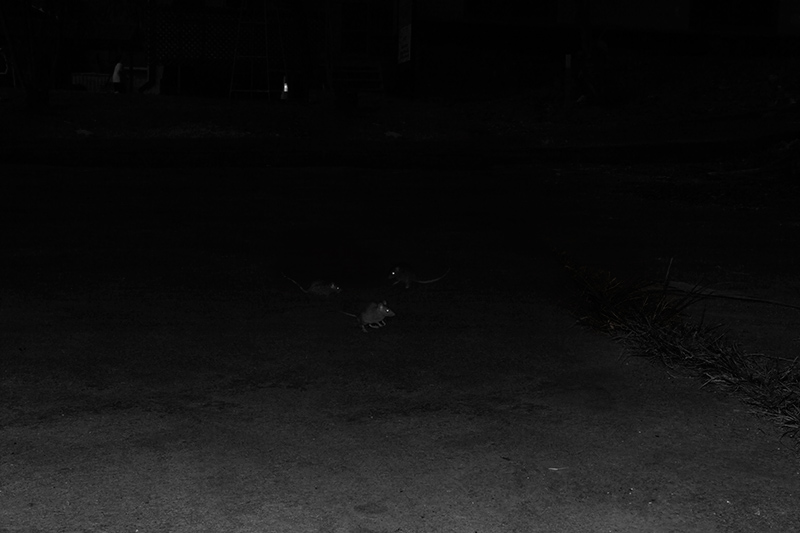 The Black Rat was first introduced on Christmas Island possibly in 1899. It is believed that the Black Rat caused the extinction of the endemic Maclear’s rat Rattus macleari with a disease. The Maclear’s rat might have kept the population of the Christmas Island Red Crabs in check, as early inhabitants of Christmas Island rarely mentioned these crabs or their mass migration to the sea. It is possible that the present large population of crabs on Christmas Island is partially caused by the extinction of the Maclear’s rat.
The Black Rat was first introduced on Christmas Island possibly in 1899. It is believed that the Black Rat caused the extinction of the endemic Maclear’s rat Rattus macleari with a disease. The Maclear’s rat might have kept the population of the Christmas Island Red Crabs in check, as early inhabitants of Christmas Island rarely mentioned these crabs or their mass migration to the sea. It is possible that the present large population of crabs on Christmas Island is partially caused by the extinction of the Maclear’s rat.
 Seeds and animals from shorelines, or washed down flooded rivers, perhaps on rafts of vegetation or drifting logs, may be carried to islands by ocean currents.
Seeds and animals from shorelines, or washed down flooded rivers, perhaps on rafts of vegetation or drifting logs, may be carried to islands by ocean currents.
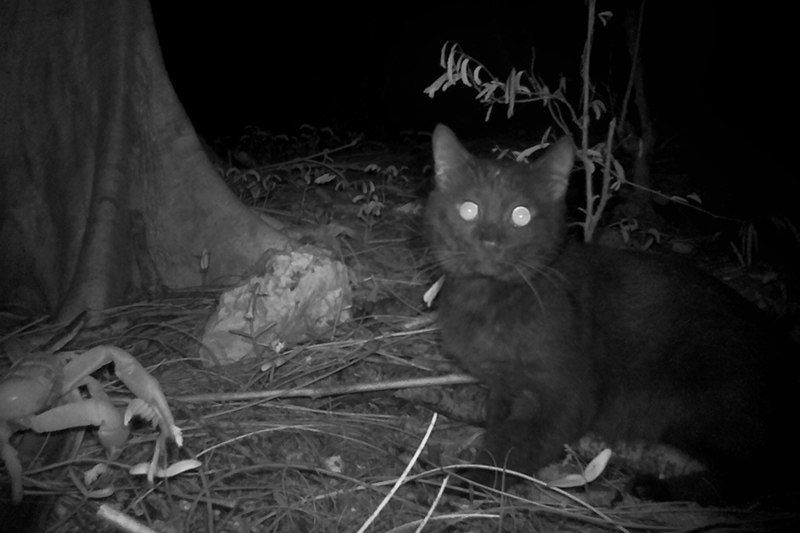

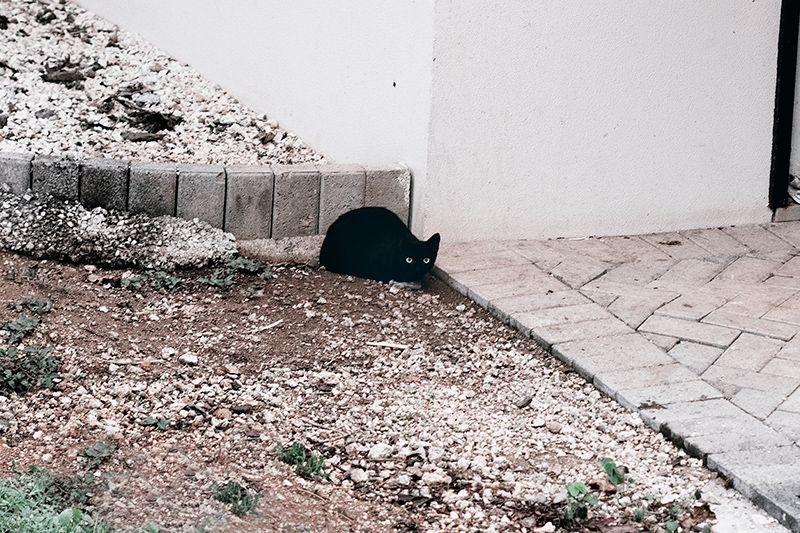 Feral Cat
Feral Cat
Cats were taken to Christmas Island during first settlement in 1888 (Tidemann et al., 1994) which resulted in an abundant feral population being present across the island. There was also a large domestic and stray cat population within the residential area. The impact of cats in particular, and also rats, on the biodiversity of Christmas Island was of significant concern to land management agencies and the broader community. As a consequence, a ‘Management Plan for Cats and Black Rats on Christmas Island’ (Algar & Johnston, 2010) was commissioned that would mitigate the environmental and social impacts of cats and black rats across all land tenures (shire-managed lands, Crown land including mine leases and Christmas Island National Park). The management strategy recommended a staged approach to their control leading to eradication of one or both target species.
D. Algar, N. Hamilton, C. Pink, ‘Progress in eradicating cats (Felis catus) on Christmas Island to conserve biodiversity’, Raffles Bulletin of Zoology, Supplement 30, 2014
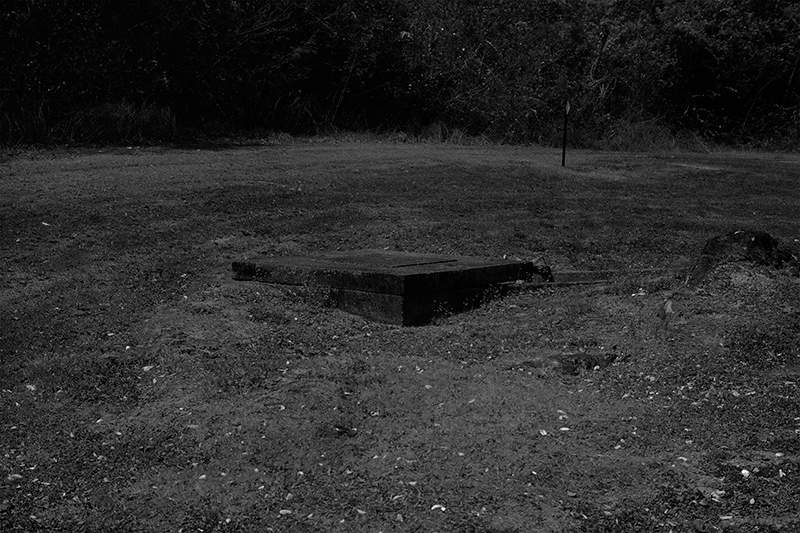 The last stray dog on Christmas Island was seen on this spot in 2012, shortly after the beginning of the Cat Eradication Program. There are currently no dogs on Christmas Island.
The last stray dog on Christmas Island was seen on this spot in 2012, shortly after the beginning of the Cat Eradication Program. There are currently no dogs on Christmas Island.
Copyright 2016, Institute of Critical Zoologists